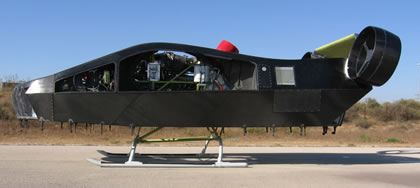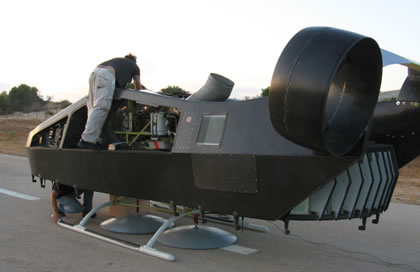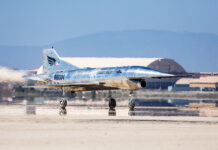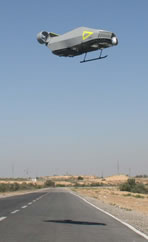
Among the new platforms on show at the Israeli pavilionat the 48th Paris Air Show was a model of the MULE, developed by Urban Aeronautics. Earlier this month the MULE was transferred to the flight-testing facility where it its Turbomeca Ariel 1D1 engine performed initial runs. The MULE is currently undergoing ground tests in Israel and is expected to make the first flight later this year.
The vehicle introduces a revolutionary capability for battlefield logistics ‘push’ and casualty evacuation, supporting land forces and amphibious operations. The vehicle employs the Fancraft louvered internal-rotor lift and propulsion system, sustaining a maximum takeoff weight of one ton, the platform cal lift a useful cargo weighing up to 227 kg plus fuel, for missions of 2-4 hours at speeds up to 100 knots, operating at altitudes up to 12,000 ft.
“MULE is an ideal platform to meet the challenge of supplying troops and evacuating casualties in urban, forested, and other inaccessible environments.” Urban Aeronautics founder, Rafi Yoeli told Defense Update. “Its internal rotor design employs our patented Fancraft technologies enabling it to maneuver with unprecedented precision and stealth in even the most constricted areas.”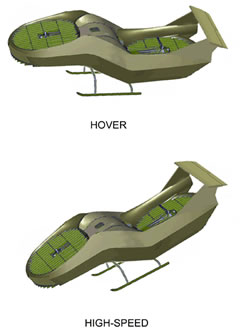
The “Vane Control System” (VCS) is at the core of the Fancraft technology, comprising a cascade of vanes at both the inlet and outlet of the ducts that can be deflected either in unison (top and bottom) or differentially to generate either pure side force or pure rolling moment. The ducts (front and back) can also be deflected differentially to generate yaw. “VCS generates 6 degrees of freedom entirely independent of one another and, for the first time, we have a vehicle that can move sideways without the need to roll and vice versa.” Yoeli explains. “In addition, the VCS generates such a great amount of control power that the vehicle can withstand gusts of up to 50 knots.” To sustain higher forward flight speed of up to 100 knots, a set of louvers at the front of the forward duct and rear of the aft duct are opened, allowing airlflow to move through the ducts, thereby greatly reduce drag. “At such higher speeds, the fuselage itself functions as an airfoil and generates up to 70% lift, significantly offloading the lift rotors.” Yoeli added.
The company is currently working on two unmanned applications of the Fancraft design – the Panda, a small, electrically powered, surveillance UAV and the MULE, a mid-size UAV with a 500 pound payload carrying capability. In 2006 the company embarked on a cooperation with Bell Helicopters, to design the X-Hawk, a large man-carrying variant for intra-urban missions in both the military and civilian sectors.

